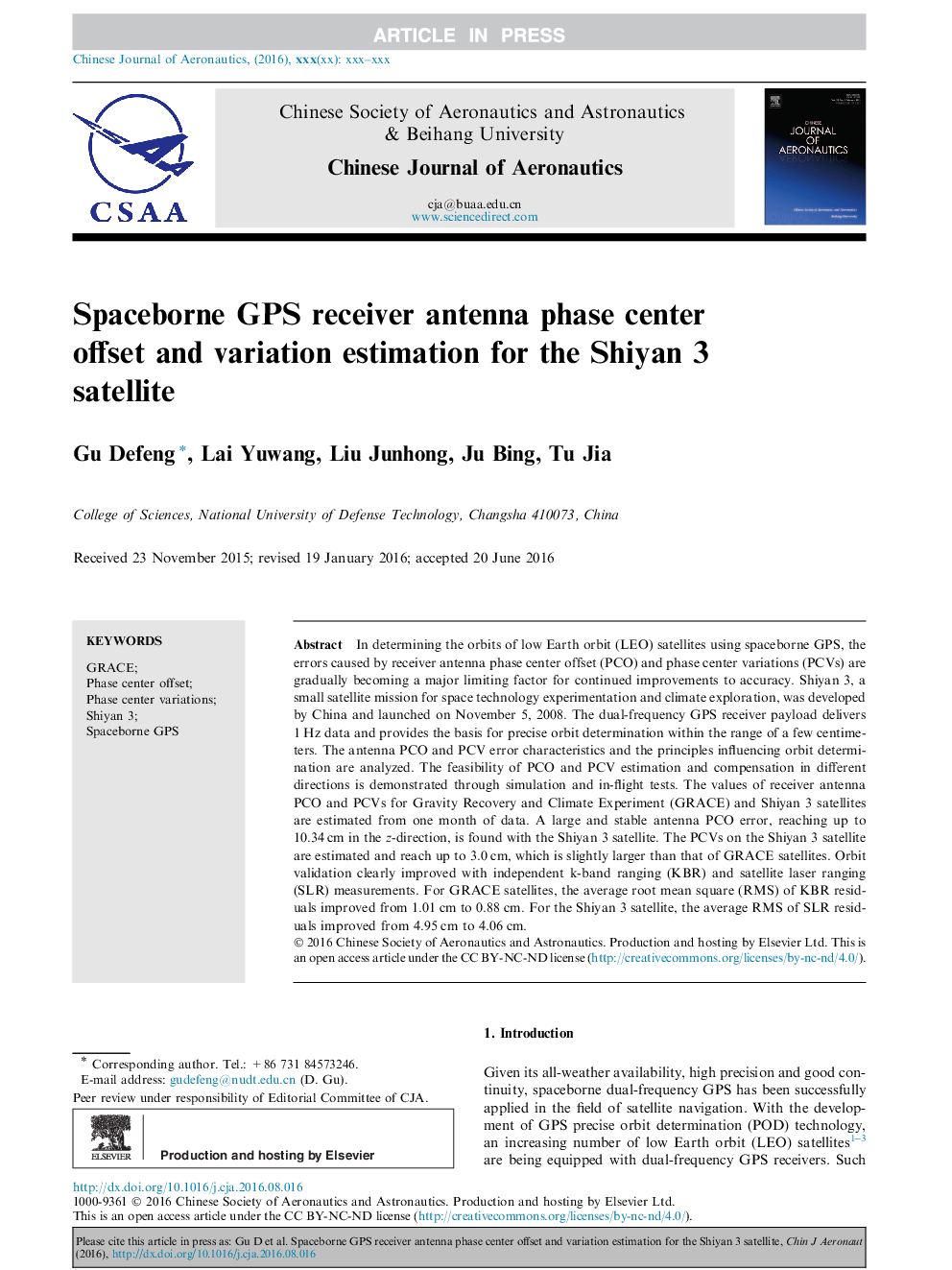| Article ID | Journal | Published Year | Pages | File Type |
|---|---|---|---|---|
| 7154339 | Chinese Journal of Aeronautics | 2016 | 10 Pages |
Abstract
In determining the orbits of low Earth orbit (LEO) satellites using spaceborne GPS, the errors caused by receiver antenna phase center offset (PCO) and phase center variations (PCVs) are gradually becoming a major limiting factor for continued improvements to accuracy. Shiyan 3, a small satellite mission for space technology experimentation and climate exploration, was developed by China and launched on November 5, 2008. The dual-frequency GPS receiver payload delivers 1Â Hz data and provides the basis for precise orbit determination within the range of a few centimeters. The antenna PCO and PCV error characteristics and the principles influencing orbit determination are analyzed. The feasibility of PCO and PCV estimation and compensation in different directions is demonstrated through simulation and in-flight tests. The values of receiver antenna PCO and PCVs for Gravity Recovery and Climate Experiment (GRACE) and Shiyan 3 satellites are estimated from one month of data. A large and stable antenna PCO error, reaching up to 10.34Â cm in the z-direction, is found with the Shiyan 3 satellite. The PCVs on the Shiyan 3 satellite are estimated and reach up to 3.0Â cm, which is slightly larger than that of GRACE satellites. Orbit validation clearly improved with independent k-band ranging (KBR) and satellite laser ranging (SLR) measurements. For GRACE satellites, the average root mean square (RMS) of KBR residuals improved from 1.01Â cm to 0.88Â cm. For the Shiyan 3 satellite, the average RMS of SLR residuals improved from 4.95Â cm to 4.06Â cm.
Keywords
Related Topics
Physical Sciences and Engineering
Engineering
Aerospace Engineering
Authors
Gu Defeng, Lai Yuwang, Liu Junhong, Ju Bing, Tu Jia,
